Previously, I showed you how to display Japanese text correctly in Diorama Studio and the ShinkiNET Launcher. I’m now going to provide some recommendations for optimising things.
There are a couple of things you should be aware of when switching the language setting of your Windows XP system. It may, as you might expect, result in some text display oddities with non-Japanese programs but more seriously, it may cause some non-Japanese programs to lose functionality. To give just one example, I had problems scanning a file with a Japanese name with my antivirus software, Grisoft’s AVG, and could only do so after I reverted my language settings to its original setting.
Thus, I would strongly recommend switching your system’s Regional setting to your original language setting after you’re done using Diorama Studio. This doesn’t require restarting your system so you can switch back and forth quickly enough.
To make it easier for you to switch language settings back and forth, you should consider creating a desktop shortcut to Regional and Language Options.
To do so, hover the mouse cursor over the option, right-click and you should see the following menu:
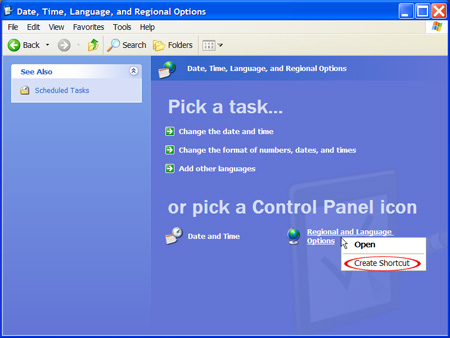
Select “Create Shortcut” and Windows XP will give you an option to create a shortcut on your desktop.
My second recommendation is to switch the “Language for non-Unicode programs’ setting back to your original language setting once you’ve installed the Diorama Studio program and familiarised yourself with the ShinkiNET Launcher. This is to prevent any potential conflicts with non-Japanese programs. Reverting back to your original language setting for “Language for non-Unicode programs” will cause you to see gibberish in the ShinkiNET Launcher once again but you should have no problems launching Diorama Studio since it is the first option in the ShinkiNET Launcher. Be advised that switching the “Language for non-Unicode programs” setting will probably require you to restart your system.
My third recommendation is to remove the IME toolbar. The IME language toolbar, which enables Japanese text input on non-Japanese keyboards, is automatically activated each time you set the Regional setting to Japanese. However, Diorama Studio doesn’t require any Japanese text input so it doesn’t make sense to have the IME toolbar running.
To remove the IME toolbar, go to Regional and Language Options once again.
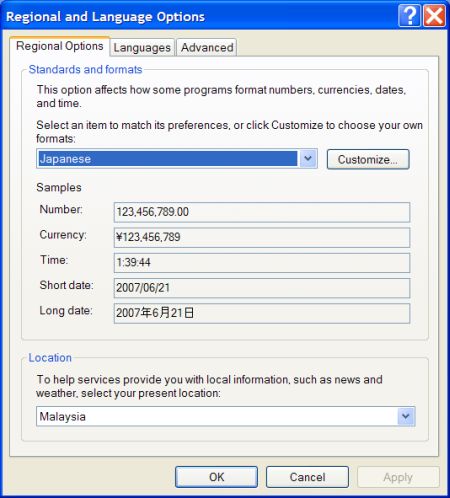
Click on the Languages tab and then click on the Details button.
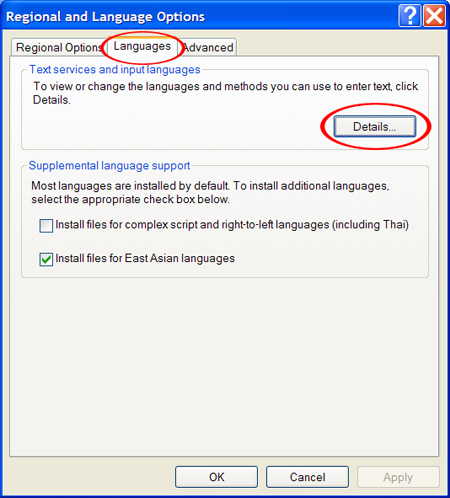
You should now see this:
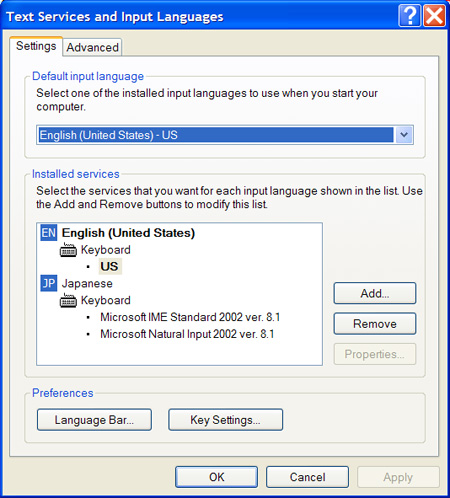
Click on Japanese and then click on the Remove button.

Click on the Language Bar… button.
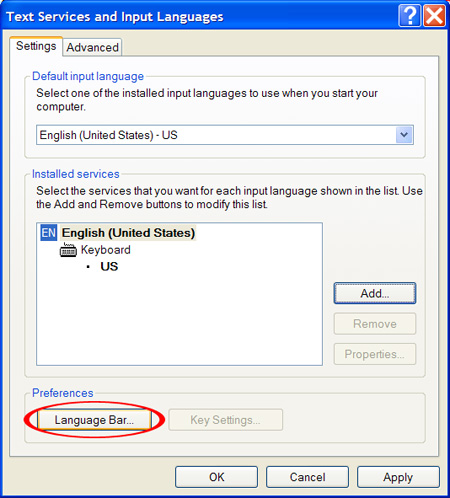
The “Show the Language Bar on the desktop” should have a checkmark next to it. Uncheck that option by clicking on the box.
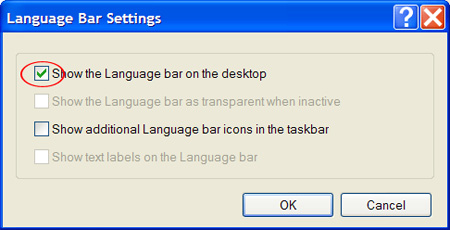
Now click on the Apply button have all the changes to take effect.
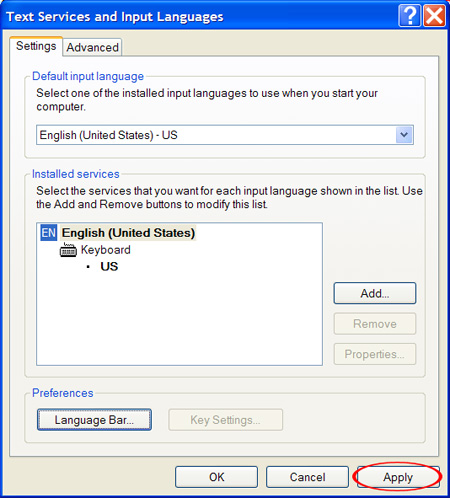
Keep in mind that setting the Regional setting to Japanese will also automatically activate the Japanese IME toolbar so you will have to go through those steps again to remove the IME language toolbar.
